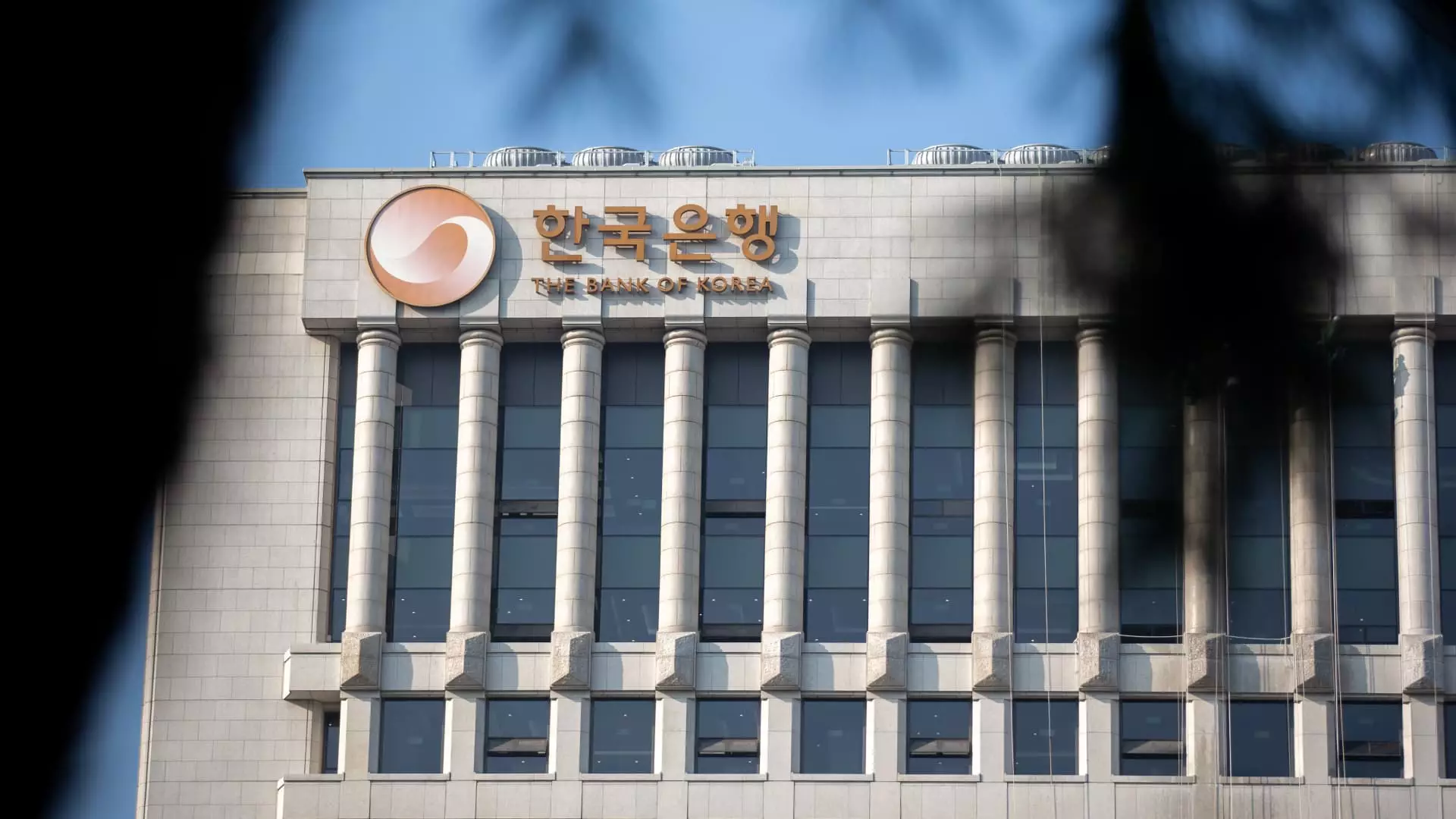The recent decision by South Korea’s central bank to cut the policy interest rate by 25 basis points highlights the precarious state of the nation’s economy. The Bank of Korea (BOK) has lowered rates to 2.5%, marking the lowest point since August 2022. This isn’t just a simple financial recalibration; it is a desperate maneuver to combat dual threats: an unyielding wave of political instability and the imposing shadow of trade barriers stemming from the Trump administration’s tariffs. After three consecutive cuts in its last six meetings, the BOK is clearly trying to stave off further economic decline, a move that rings alarm bells across economic forums worldwide.
The Political Storm
Political upheaval often skews a nation’s economic prospects, and South Korea is no exception. The country finds itself in the grips of a significant political crisis following former President Yoon Suk Yeol’s controversial botched attempt at implementing martial law last December. Such political disarray raises concerns about long-term strategic decision-making in vital areas like trade and economic policy. As the South Korean populace prepares for a snap presidential election on June 3, uncertainty looms large; the results could set the stage for necessary reforms or plunge the country deeper into chaos. Such instability inevitably complicates negotiations with the United States regarding tariffs, which could further exacerbate economic troubles.
Trade Turmoil and Economic Reality
The looming deadline for tariff negotiations is pressing. South Korea faces a 25% tariff on its exports to the U.S., a crippling imposition that could lead to significant job losses and industry disruptions. Although an extension of 90 days buys some time, the window is closing fast. The obstacles to a favorable resolution are compounded by the impending elections, which may hinder decisive leadership amid pressing economic needs. Trade is typically a realm of bipartisan consensus, but in the volatile landscape of South Korean politics, reaching a coherent policy stance becomes increasingly impractical.
The Fragile Economic Forecast
Compounding these issues, South Korea’s GDP growth has taken a concerning dip, contracting by 0.1% in the first quarter—the first contraction since late 2020. Alarmingly, the central bank has revised its GDP forecast for 2025 down to a mere 0.8%, from a previously optimistic estimate of 1.5%. Such adjustments suggest not just reactive policies but a grim acknowledgment of the deeper economic malaise affecting the nation. While BOK maintains that inflation remains stable, the real fear is that diminished domestic consumption could stall recovery even further, particularly as the crucial property sector is gripped by stagnation.
The Role of Leadership
The forthcoming presidential election presents a sliver of hope for economic revitalization, yet it could also lead to more strife. Economic experts like Gareth Leather of Capital Economics indicate that a new leadership could bring needed fiscal stimulus to invigorate consumer spending. However, the gravity of the current situation cannot be overstated; any potential gains from new policies may be dwarfed by the existing turmoil in the export sector and the property market. These entwined issues create a complicated web and require adept leadership—something that remains to be seen amid the political strife.
Market Reactions and Future Prospects
In the immediate aftermath of the interest rate cut, the Kospi stock index experienced a surge of 1.25%. However, the South Korean won fell by 0.71% against the U.S. dollar, signaling a lack of confidence in the underlying economic stability. Such volatility paints a troubling picture for investors, who may be caught in a cycle of reacting to headlines rather than underlying fundamentals. As South Korea navigates these tumultuous waters, the path forward will likely involve continuous adjustments in both monetary and fiscal policy, further complicating an already precarious equilibrium.
In summation, South Korea now stands at a crossroads. With immediate decisions weighing heavily on its political leaders and the economy hanging in the balance, the country must tread carefully if it hopes to restore stability and foster growth in what is proving to be an extraordinarily challenging climate.

